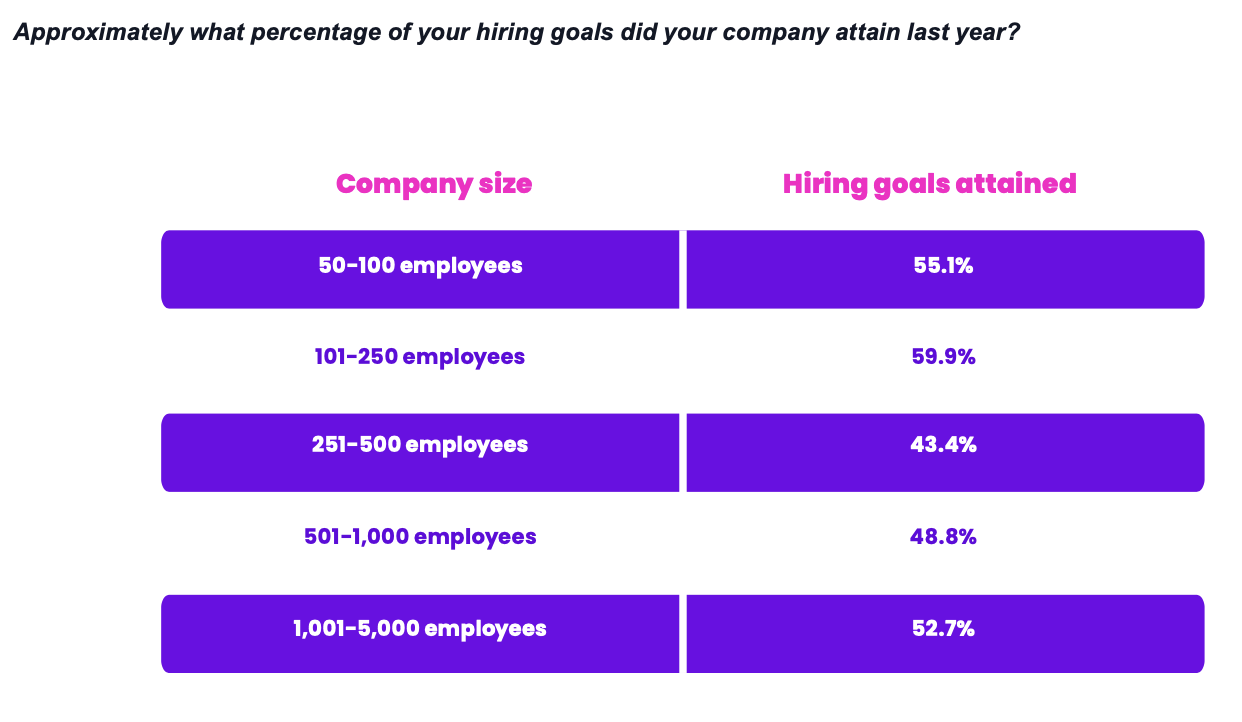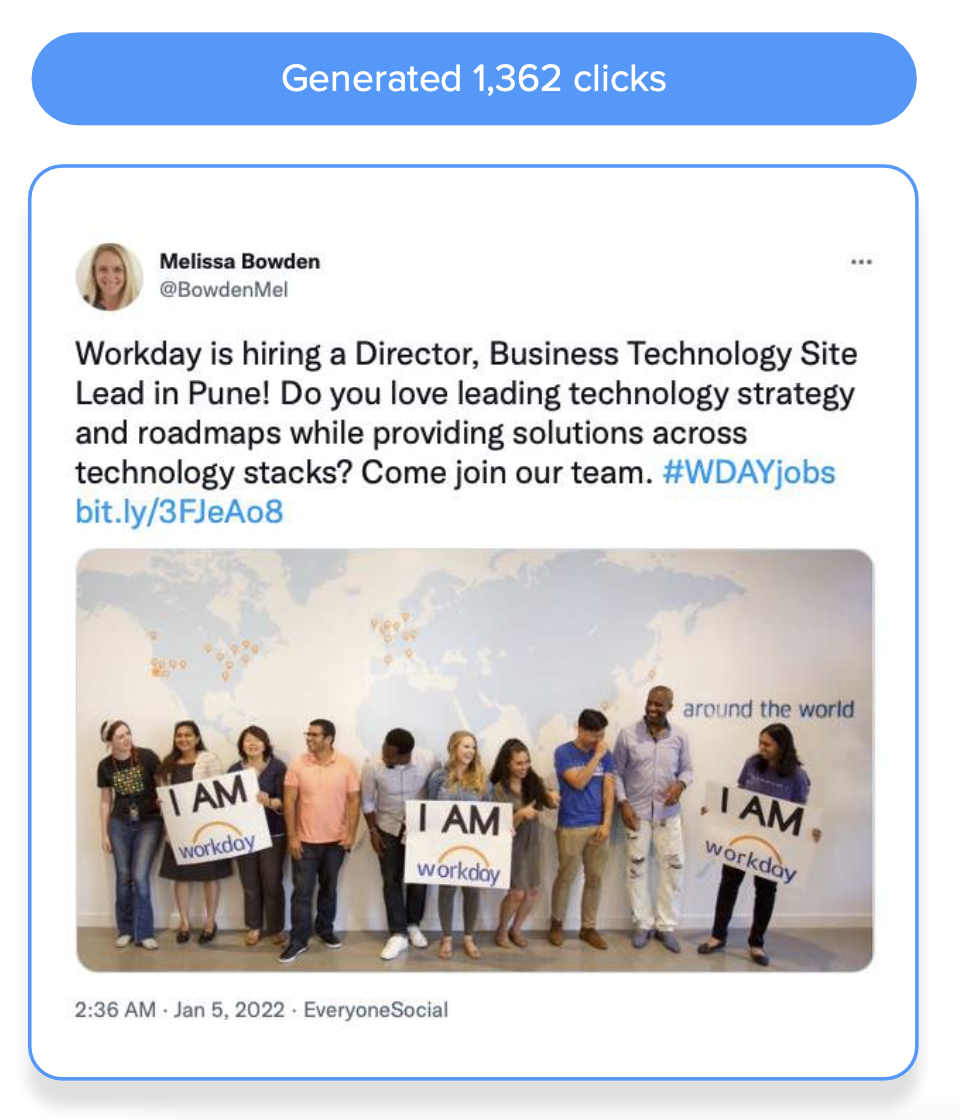The average cost per new hire is $4,700, according to the Society of Human Resource Management.
But many employers estimate that cost to be much higher — three to four times the position’s salary, in fact. That means hiring for a job that pays $80,000 could result in spending up to $320,000. 🤯
What exactly goes into all these recruiting and hiring costs? And is there a way to save on them?
Let’s take a look. (And by the way, the answer to that last question is “Yes!”)
What’s Included in the Cost of Recruiting an Employee?
There are numerous costs to consider when filling an open position, and they include people, systems, equipment, and supplies.
- Recruiter costs: An external recruiter is typically paid 15% to 25% of an employee’s first-year salary. If a recruiter places a candidate making $100,000 with a company, and the recruiter charges 20%, the company would pay $20,000 for the placement.
- Software: There may be several types of software involved in hiring, depending on your company’s process, especially an applicant tracking system, which is one of today’s top recruitment tools. Costs for such software can vary from one-time licenses to monthly or annual subscriptions.
- Referral programs: Many organizations provide financial incentives to employees who recommend a candidate they end up hiring. Referral rates can range from a few hundred dollars to several thousand.
- Job posting costs: Job boards, career sites, and social media ads are important in helping to get the word out about open positions. Pricing structures can vary from a flat rate to a few cents per click the ad or posting receives.
- Website maintenance: These days, a compelling, up-to-date careers page that details not only open positions, but also company culture and employee stories, is essential to attract and hire top talent. That’s why a recruitment budget needs to account for the cost of creating, hosting, and updating the website.
- Candidate testing: Organizations may pay for software or hire a company to conduct skills assessments for potential hires.
- Other: Depending on your hiring process and budget, additional recruiting costs can include background checks, branded swag, signing bonuses, travel expenses for in-person interviews, and relocation costs.
It’s also important to consider soft costs associated with recruiting — the time that managers and others involved in the hiring process invest in the hiring process — which make up 60% of the cost of hiring a new employee.
“When all of these professionals are meeting with potential candidates, screening applications, scheduling a few rounds of interviews and making final decisions, it takes away time from accomplishing organizational goals/outcomes, which then certainly ties to ROI,” said Ankit Shah, supervisor of talent development at Columbus State Community College in Ohio.
The average time to hire for just a single position? Three weeks, according to GoodTime’s 2022 Hiring Insights Report. So all those soft costs really add up.
And despite the financial and time investment organizations make to recruit and hire the best people, it doesn’t always pay off.

GoodTime asked 560 talent acquisition decision makers what percentage of their hiring goals they met in 2021. The average answer? Only 51%.
Calculate Your Employee Advocacy ROI 📈
Get a custom, shareable report highlighting the ROI you can expect to generate from employees sharing and creating content.
You Already Have the Key to Lowering Recruiting Costs
Now that we know what all goes into recruiting an employee — and understand how it adds up to those thousands of dollars — let’s take a look at one of the most effective ways to save on these costs.
The key lies in your most valuable resource: the people you already employ.
Sure, your people can make great referrals to fill open positions at the company, but their value in talent acquisition extends much further.
Today, 4.62 billion people use social media — and lots of those people are looking for their next position and great companies that align to with their values.
Seventy-nine percent of job applicants use social media in their search now, and job seekers rank social media and professional networks as the most useful job search resource. Plus, 73% of Millennials found their last job through a social media platform.
Sure, you can reach some of these people by sharing jobs on branded social accounts or even placing social ads, but this isn’t nearly as effective as having your people spread the word organically.
That’s because it speaks volumes about an organization when its employees share open positions or employer branding content that tout how the company is a great place to work.
It’s no surprise then that job seekers rank current employees as the most trusted source for information about a company — and why some of the most shared and engaging content on EveryoneSocial is job-related.

In fact, one EveryoneSocial customer saw more than 50% of employee referrals for one job posting! 😮
By the Numbers: How Employee Influencers Save on Recruiting Costs
As we outlined above, multiple different things go into recruiting costs, and these can vary widely based on the organization, its hiring process, its resources, the positions it needs to fill, and more.
This makes it challenging to detail exactly how much a given company can save on recruiting costs by activating its employee influencers. But there’s a reason why Kelly Services, Atkins, and numerous other happy customers rely on EveryoneSocial to help them recruit, hire, and retain top talent.
Let’s take a look at an example of one company though and see how the numbers break down.
Recruiting cost example
This 250-person tech company needs to fill just 50 positions. Using SHRM’s average cost per new hire of $4,700, we’re conservatively looking at a total recruiting spend of $235,000 (4,700 x 50).
For the sake of simplicity, let’s say the company plans to pay an $80,000 salary for each position, and the company absolutely can’t go over its $235,000 budget.
If the organization enlists the services of a recruitment agency that charges just 15% of open positions’ salaries (Remember: Most recruiters charge 15% to 25%), it’s going to cost $600,000 to fill those positions (15% x 80,000 x 50). 🤯 That’s already well over our conservatively estimated total recruiting spend!
If this company is also paying to post on job boards or running social ads to catch the eye of candidates, those recruiting costs are only going to grow.
Now let’s say this company instead relies primarily on its people to spread the word about open positions via EveryoneSocial. If all of its 250 employees are activated on the platform, it costs $6,000/month via our Teams Plan, or $72,000/year.
By sharing open positions and employer branding content that showcases why the company is a great place to work, let’s estimate that most of those open positions (40 of them) are filled because someone in current employees’ networks applied and were hired.
Even if this company has an employee-referral program that pays referring employees $500 for a successful hire, that still brings hiring costs to just $92,000 ($72K + $500 x 40) — and that’s only if we include EveryoneSocial 100% in this company’s recruiting costs.
But, for the sake of argument, let’s say this company does put EveryoneSocial completely in its recruiting costs because it relies so heavily on the platform for employee branding and recruitment.
If the company wants to stay within that $235,000 we conservatively budgeted at the beginning, it now has $143,000 left. It could apply this budget toward a recruiter — perhaps those ten remaining open positions are highly technical and require a specific skill set.
If this is how the company proceeds, it’ll spend $120,000 to fill those ten technical positions (80,000 salary x 15% recruitment fee = $12,000 x 10 open positions).
Total spent to fill those 50 positions? $212,000. 😌 It even has funds left over to pay for other recruiting costs or put back in the bank!
Of course, this is a hypothetical, rather simplistic scenario, but you can see how the numbers break down — and just how cost-saving an employee advocacy solution like EveryoneSocial can be.
An employee influencer program also helps recruiting efforts in less direct ways though that can’t necessarily be qualified.
For example, by encouraging employees to create and share content — and making it fun and rewarding — your organization will generate compelling employee-generated content and employee stories. And this is exactly what potential hires want to see both organically in their social feeds and on your careers page.
Additional Benefits of Employee Social Networks for Recruiting
- Better organic reach. People have an average of 1,000+ social connections — and that includes your people. So with 2,000 employees, that’s an additional 2 million reach alone. This doesn’t account for employee network growth and secondary networks seeing the content.
- The network effect compounds. Think about what happens when employees’ networks engage with job postings and other company content: The employees’ networks’ networks can then see that content in their feeds, and so on.
- Improves employee retention. Attracting top talent that stays longer means less time having to recruit new employees .
- Reduces cost per application. Simple as that.
- Better recruiting results. The performance of your ads and postings on job boards and career pages improves because people are now more familiar with your employer brand, employees, and what it’s like to work for you. This makes your other other channels effective as well.
Just check out what EveryoneSocial did for these companies.

Get Employees to Share Recruiting and Employer Branding Content
You’ve got people. Now you just need to activate them and transform them into employee influencers, so they can help you save on recruiting costs.
That’s where EveryoneSocial comes in.
You need a pure-play advocacy solution to get employees creating, sharing, and engaging with content — and that’s exactly what our platform is designed to do.
















